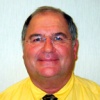Alternatives to Surgery
At our clinic we provide adjunctive care. Below are explanations for three of the more commonly provided adjunctive care offerings, or additional non-surgical services, that we provide.
The first involves Carpal Tunnel Syndrome, a somewhat new phenomenon. Some of the symptoms of Carpal Tunnel Syndrome include numbness and pain in the hand, difficulty squeezing the affected hand and other pains. Many times Carpal Tunnel Syndrome is misdiagnosed as an orthopedic disorder. There is a technique of chiropractically adjusting the wrist to increase the its range of motion and relieve any impingement of the nerves. If this technique works, it is obviously not true Carpal Tunnel Syndrome.
Cubital Tunnel Syndrome is the result of an initial spinal nerve irritation in which the nerve is “crushed” or irritated at the spine and primes the nerve for further irritation at the wrist. It is similar to Carpal Tunnel Syndrome in that pressure on the ulnar nerve in the elbow causes numbness and tingling in the ring and small fingers of the hand. In treatment for Cubital Tunnel Syndrome, the elbow can also be adjusted to help relieve pressure on the ulnar nerve. The reduction of pressure on the nerve helps to restore normalcy to the area and relieve pain and related symptoms. Following Australian patterns, Carpal Tunnel Syndrome combined with Cubital Tunnel Syndrome is diagnosed as Double Crushed Syndrome.
The second frequently discussed extremity disorder deals with the shoulder. There are many misunderstandings concerning rotator cuff tears, subluxation and arthritis of the shoulder. In the past the shoulder would have been manipulated under general anesthesia. Now we can effectively treat the shoulder by using laser therapies, acupuncture and manual manipulation without any anesthesia. The ultimate goal of treatment is to increase the range of motion and eliminate pain with manipulation, which will begin the ultimate process of healing.
The third extremity of distress is the foot, most often concerning the tarsals and metatarsals, the bones in the feet. The loss of the arch in the foot is also of concern and may cause discomfort. An achy, stingy feeling in the ankles is a precursor for arthritic growth and loss of balance and stability. To help eliminate this achy feeling, the feet and ankles can be adjusted.
These three chiropractic manipulations of the wrists, shoulders and feet are a direct sensory response from the spinal cord to the brain to stimulate the healing process of almost any damaged articular surface. These considerations should be discussed prior to invasive surgical techniques which, even with the best of medical intentions, do not always relieve the symptoms. IBI
The first involves Carpal Tunnel Syndrome, a somewhat new phenomenon. Some of the symptoms of Carpal Tunnel Syndrome include numbness and pain in the hand, difficulty squeezing the affected hand and other pains. Many times Carpal Tunnel Syndrome is misdiagnosed as an orthopedic disorder. There is a technique of chiropractically adjusting the wrist to increase the its range of motion and relieve any impingement of the nerves. If this technique works, it is obviously not true Carpal Tunnel Syndrome.
Cubital Tunnel Syndrome is the result of an initial spinal nerve irritation in which the nerve is “crushed” or irritated at the spine and primes the nerve for further irritation at the wrist. It is similar to Carpal Tunnel Syndrome in that pressure on the ulnar nerve in the elbow causes numbness and tingling in the ring and small fingers of the hand. In treatment for Cubital Tunnel Syndrome, the elbow can also be adjusted to help relieve pressure on the ulnar nerve. The reduction of pressure on the nerve helps to restore normalcy to the area and relieve pain and related symptoms. Following Australian patterns, Carpal Tunnel Syndrome combined with Cubital Tunnel Syndrome is diagnosed as Double Crushed Syndrome.
The second frequently discussed extremity disorder deals with the shoulder. There are many misunderstandings concerning rotator cuff tears, subluxation and arthritis of the shoulder. In the past the shoulder would have been manipulated under general anesthesia. Now we can effectively treat the shoulder by using laser therapies, acupuncture and manual manipulation without any anesthesia. The ultimate goal of treatment is to increase the range of motion and eliminate pain with manipulation, which will begin the ultimate process of healing.
The third extremity of distress is the foot, most often concerning the tarsals and metatarsals, the bones in the feet. The loss of the arch in the foot is also of concern and may cause discomfort. An achy, stingy feeling in the ankles is a precursor for arthritic growth and loss of balance and stability. To help eliminate this achy feeling, the feet and ankles can be adjusted.
These three chiropractic manipulations of the wrists, shoulders and feet are a direct sensory response from the spinal cord to the brain to stimulate the healing process of almost any damaged articular surface. These considerations should be discussed prior to invasive surgical techniques which, even with the best of medical intentions, do not always relieve the symptoms. IBI

